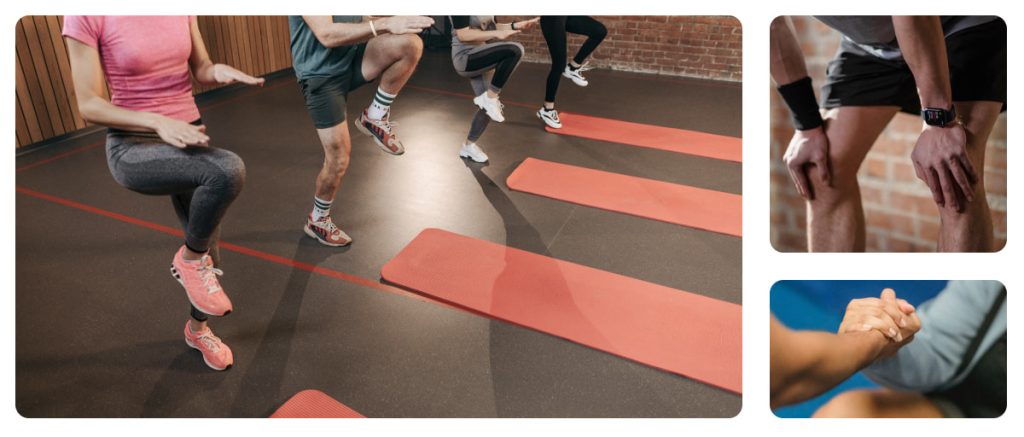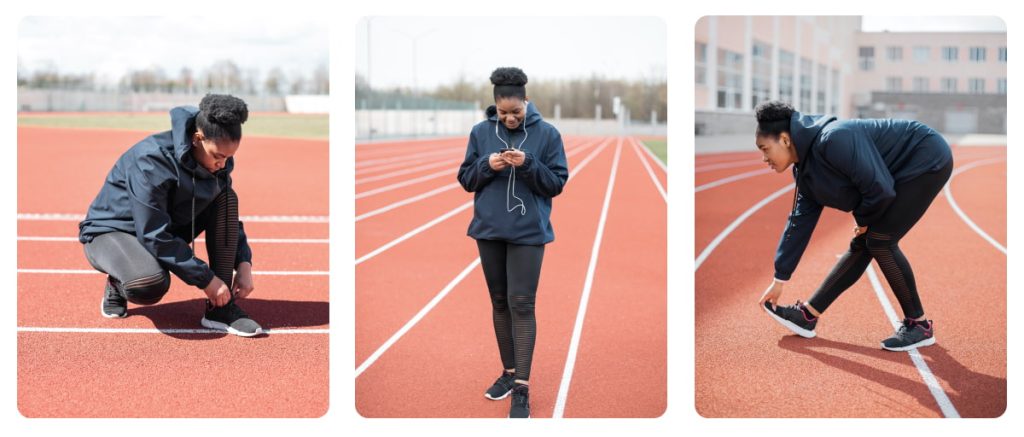Do you have knee pain but aren’t sure why? A recent study found that 47% of participants experienced knee pain in one or both of their knees. For many who are working from home, they’re probably all too aware of the problem.
Today, we’ll talk about everything related to knee pain, including what you’re doing wrong and how you might still be able to fix it.

First, why do people have knee pain?
There are a lot of factors that go into whether someone will experience pain in their knees, including genetic ones. Most pain is caused by a number of health conditions like putting too much weight on them, which leads to injury or working out too intensely and too quickly. Regardless of how the pain started, it all leads back to one simple truth: knee pain is a sign that your body has an injury.
1. Smoking
Yeah, unfortunately, smoking isn’t just bad for your lungs, blood pressure, and cardiovascular system, but it’s also bad for your joints. Nicotine is a chemical that enters the body and stops the absorption of calcium which is essential for joint health.
2. You’re not moving your knees enough
Knee pain can also be caused by not moving your knees enough. If you’ve ever gone to physical therapy, you might feel sore afterward and also feel like the exercises are painful. That’s supposed to happen, and it will help decrease the pain in the long run.
The difference between moving your knees too much and physical therapy is that a physical therapist knows which movements will help strengthen your knee during recovery. If you attempt to do the therapy on your own or move too much on your own, there is a chance that you’ll also make the pain worse.
In Germany, your general practitioner can prescribe physical therapy for chronic knee pain, so it’s best to make an appointment sooner rather than later.
3. Waiting for a dislocated knee to heal
Many people think that a dislocated knee cap is something that will heal on its own, like a sprain or sore muscles. If the knee cap pops back into place on its own, this might be the case, but if you’re not a medical professional, you might not be able to tell.
Dislocated knees can sit in a false position and tend to dislocate more often once they’ve started moving out of place. This can cause chronic knee pain and sometimes even require surgical correction.
4. You’re squatting wrong
Squatting seems like one of the easiest ways to exercise at home since it doesn’t require any equipment, but if you’re squatting wrong, you could be hurting yourself. A good way to compromise if you don’t have the benefit of having your posture corrected by a personal trainer is to pretend you’re sitting on a chair and hold that position with your back against the wall. You’ll get similar benefits to a squat with less strain on your knees.
You can see this exercise illustrated in the following guide.
5. Floating cartilage or bone
Floating objects between your knee cap and joint are common as we get older and can cause pain as they find their way into unsuspecting places. These floating objects can be small or pretty large and can also cause damage to your blood vessels or cartilage. When your joint becomes inflamed due to one of these objects, you’ll most likely need to have surgery to remove it.
6. You’ve been standing too long… or sitting too long
While it might sound like a lose-lose situation, the general rule is that you should be standing up for at least 30 minutes to every hour you’re sitting.
Exercising regularly at your desk, at home, or in the gym can also help reduce knee pain. Just remember that your bones, ligaments, and tendons need significantly more time to heal than your muscles, so going too hard too fast can lead to major injuries.
7. Arthritis
Arthritis is most common in people over the age of about 45, but it can happen to younger people. This is called juvenile arthritis. Arthritis translates to the swelling of joints and can come from a number of different causes. The most common is osteoarthritis, where the soft cushion around the bone is slowly worn down over time, and the bone begins to rub against itself and cause painful swelling. Shots and surgeries can offer relief for some, but a doctor will need to examine you to know more.
8. Starting high-impact exercises without training
As we’ve mentioned before, if you start working out, you’ll need to do it slowly and let your body adapt to the movements. If you don’t start slowly and decide to do high-impact workouts immediately, you’ll most likely end up damaging important ligaments and tendons in your knees that can lead to pain later on.
9. Gout
You might have heard about this during your history class or when watching shows about medieval kings. The disease still exists today and impacts people who eat foods high in purpine and also have a genetic inclination towards the disease. Purpine can cause uric acid to solidify in the joints which form crystals and are painful. This can lead to gout flair-ups.
10. Not warming up
Ready to hit the gym and start your morning workout? If you’re not spending enough time stretching, you might be accidentally hurting your knees. By warming up the tendons and ligaments, you can save yourself from pain a few hours afterward.
Here is a guide to knee stretches if you suffer from knee pain and work out regularly.
11. Cellulitis
Cellulitis is a condition where healthy skin bacteria make their way under your skin and cause infections. This can sometimes spread into your knees and cause what’s called a “septic joint,” where your knee gets infected.
Because the liquid between the joints is the ideal environment for bacteria, it makes treating septic joints incredibly difficult. You’ll need to see a doctor immediately to see if you’ll be able to have treatment through antibacterial medications alone or if you need surgery.
12. Locking your knees
If you lock your knees (keeping them incredibly straight) for a prolonged period of time, this can also lead to damage. It changes the way the blood flows through your limbs which is why some people during military training faint after standing for too long. It can also cause back pain as your spine needs to curve inwards and take on more pressure when your knees are locked.
13. Wearing the wrong shoes
That’s right. You can’t just buy the cheapest shoes out there for the gym and expect everything to be fine (unless you’re still in your early 20s. Then you’re probably fine for a few more years). Many online resources recommend shoes with ASIC gels to limit the impact and joint pounding that can happen.
14. Prolonged sedentary lifestyle
For those who have been leading a sedentary lifestyle for a prolonged period, this can have a negative impact on your knees. Photos of the knees of young and old athletes who do routine exercise show preservation in knee cartilage compared to those who lead a predominantly sedentary lifestyle.
So, how do I keep my knees safe then?

To keep your knees safe, you’ll need to exercise regularly at a rate you’re comfortable with throughout your lifetime, as well as stretch before and after the workout. It’s also important to remember that shoes can make a huge difference in keeping your knees protected. Certain gels limit the impact on the knees, which can help significantly.
If you’re interested in more tips and tricks, check out the rest of our healthy living series on our blog.








